the National Hockey League Entry Draft is right around the corner, and teams are finishing their final draft lists as we speak. While most teams in the first round will be drafting the best player available in their eyes, it is still important to consider where a player’s long-term fit in the organization might be. In this article, we’ll look at the top 10 right wing prospects in the upcoming draft. As players’ positions are always malleable, especially at this age, we’ll be using the NHL’s Central Scouting Draft Rankings as our official source for a player’s position. In other words, if they are listed as a RW by the NHL, they are eligible to be named in this article.
Some of the most dazzling offensive threats in the NHL play on the right wing, and these players will be looking to join their ranks in the near future. In building these rankings, we’ve consulted six primary scouting experts: Scott Wheeler and Corey Pronman of The Athletic, TSN’s Craig Button, Ryan Kennedy of The Hockey News and Sports Illustrated, and of course our own Matthew Zator and Peter Baracchini. Taking all of those experts into account, we’ll create a composite ranking of the top ten RWs for reference. But of course, at the end of the day, the only ranking that will really matter is that of the NHL general managers on draft day. Once these players are selected, it will be up to the individuals to prove their value to their new organization and justify their high draft selection.
10) Simon Robertsson (Skellefteå AIK, SHL)
NHL Central Scouting Rank: #11 (among European skaters)
Simon Robertsson has a unique appeal in this draft: he’s predictable. This draft is likely to be very difficult on GMs. Most viewed the 2021 Draft Class as a little weak to begin with, and now evaluators have to deal with the challenges brought on by the COVID-19 pandemic. What Robertsson offers a GM is certainty: his upside might be limited, but he’s reliable, well-rounded, and has limited flaws. Wheeler describes him as “a play-driving, versatile winger with a standout wrist shot, who pushes the tempo through neutral ice with compact strides” (from ‘Wheeler: NHL Draft’s top 100 prospects — Michigan players top the 2021 ranking,” The Athletic NHL, Jun. 22, 2021).
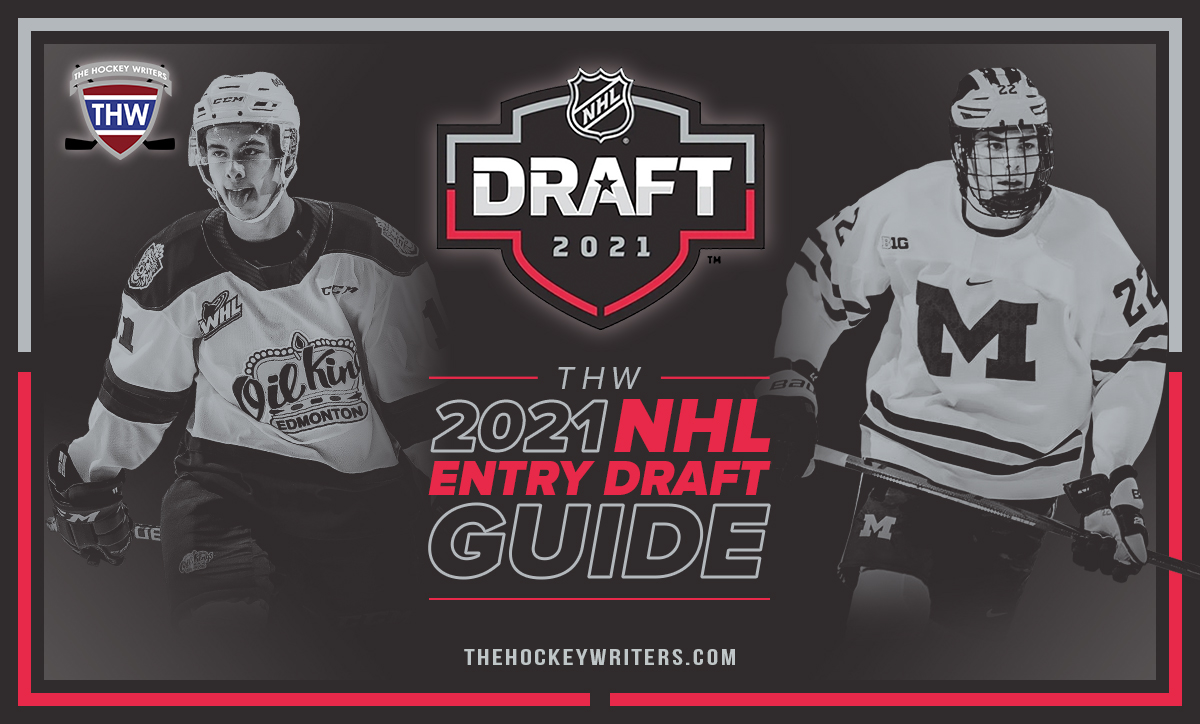
Though just 6-foot-0, Robertsson projects as a power forward. He uses his power to make plays, and his release is extremely strong coming off the boards. He’s able to pick corners from mid-range. But he works as a playmaker, too, making creative passes in tight quarters.
The biggest drawback to Robertsson is his skating. Some analysts question whether he has NHL agility, despite decent straight-line speed, which could limit his upside at the highest level. Likely, he’ll be limited to a middle-six or bottom-six role in the future, which will probably prevent GMs from taking a chance on him in the top 20 picks. But scouts looking for a reliable option who is very likely to contribute to an NHL team, even if in a limited role, Robertsson will be an appealing late-first or second-round option.
9) Matthew “Mackie” Samoskevich (Chicago Steel, USHL)
NHL Central Scouting Rank: #26 (among North American skaters)
Matthew Samoskevich, known as “Mackie,” will be joining the University of Michigan next season, where he’ll be playing alongside potential top-5 picks Owen Power, Kent Johnson, and Matthew Beniers (presuming that none of them immediately jump into the pros). But this season, Samoskevich maintained a very impressive point-per-game pace with 37 points (13 goals) in 36 games in the USHL. The loaded Steel attack won the Clark Cup playoffs, and Samoskevich was a significant contributor along the way, with one goal and nine assists in eight playoff games.
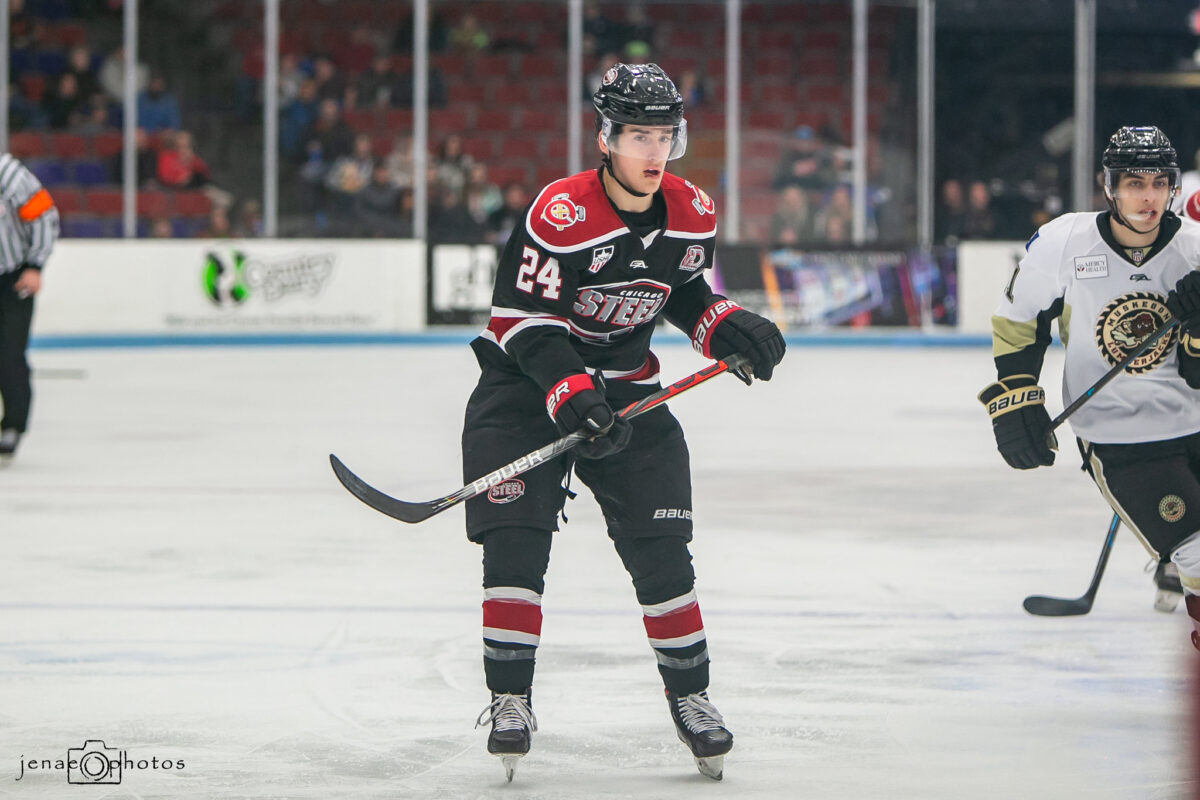
Samoskevich is a gifted player when the puck is on his stick, and, like many on this list, stands out for his above-average shot. His skating isn’t a plus, but it isn’t a weakness, either. Most analysts view him as a late first-round pick, but The Athletic’s Corey Pronman and TSN’s Craig Button have him ranked 45th and 47th respectively. Pronman’s review was far from glowing, saying “he’s an undersized player who is just OK off the puck and physically. In a sentence, Samoskevich projects as an NHL bottom-six forward” (from ‘Top 151 Prospects for 2021 NHL Draft: Owen Power leads Corey Pronman’s final rankings,’ The Athletic NHL, Jun. 15, 2021).
But others are kinder to the Newtown, CT native. Matthew Zator projects him as a high second-round pick but explains that “the elite package of creativity and offensive potential he possesses will be too enticing for a team to pass up, especially if they don’t have any exciting players in their pipeline.” Ultimately, Samoskevich’s fate will depend on which side of the line the GMs fall on. He only needs one GM to believe he’s got top-six potential to end up in the late first or early second round. Either way, you likely will hear his name called before the 60th pick.
8) Samu Tuomaala (Kärpät, Liiga)
NHL Central Scouting Rank: #10 (among European skaters)
Samu Tumaala only got five games at the highest level of Finnish hockey in 2020-21 and did not contribute on the scoresheet. But he was a standout performer with players his age, scoring 15 goals and adding 16 assists in 30 games in Finland’s U20 league. His best stretch came at the U-18 WJC, where he collected five goals and six assists in seven games, tying for fifth in total scoring. Because Finland did get in most of a season, and Tuomaala found extra opportunities to play, he does have the benefit of exposure, something many prospects in this class lack.
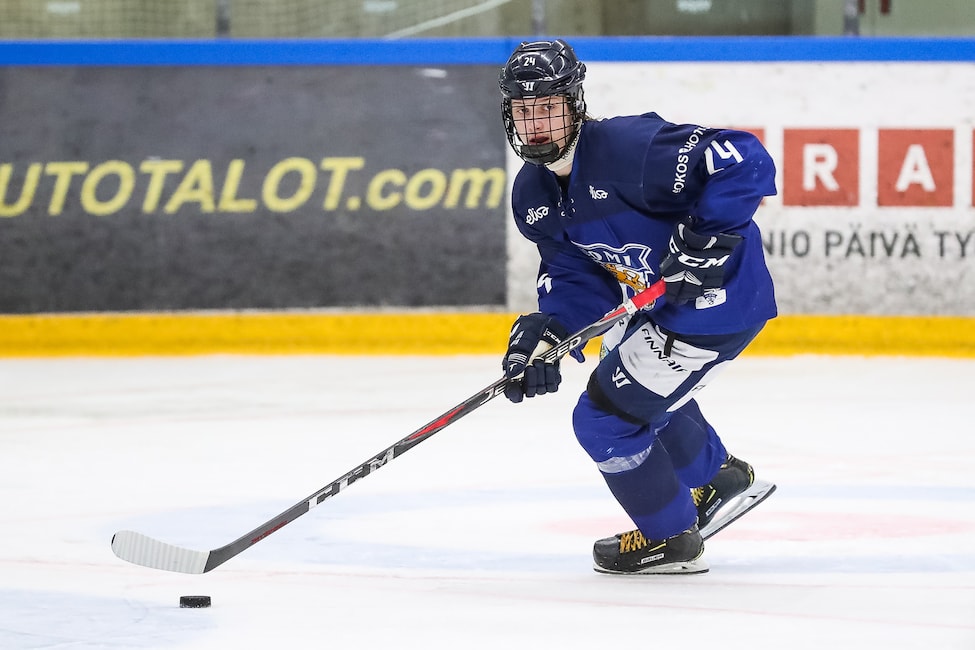
Tuomaala is a great skater, which is obviously a skill NHL scouts value very highly. He’s got high hockey IQ and seems to read the play well, ending up where the puck needs to go. The biggest knock on his game is his grittiness. For an undersized player (he stands 5-foot-10), he doesn’t show the determination needed to fight through traffic and get inside. But that is a skill that can be taught better than most at this age, and it may not concern determined GMs too much.
Commenting on his standout performance at the WJC, The Hockey Writers’ Colton Davies explained, “I believe he has solidified himself as a first-round pick at this year’s NHL Entry Draft and will be a useful winger in the years to come.” Others aren’t as high on him, but none of the analysts we charted have him outside the early second round. The sheer number of games he played should help GMs feel confident in taking him above players they may have seen less.
7) Isak Rosén (Leksands IF, SHL)
NHL Central Scouting Rank: #8 (among European skaters)
Like Tuomaala, Isak Rosén was able to play most of a full season, logging 35 games across three levels of Swedish hockey. He also had a strong performance at the U18 WJC, managing nine points in seven games. He failed to impress at the highest level, in the SHL, but still looked strong in the J20 division where he’s excelled in the past.
Pronman believes Rosén “looks like a dangerous scorer at wing,” adding, “his game has a lot of pace to it, which should translate to higher levels,” concluding, “Rosén projects as a middle-six NHL winger.” Pronman ranked the player at 35, late in the first or early in the second round, where most evaluators have him. But Zator and Baracchini both rank him firmly inside the to-20, in large part due to his standout performance among his peers.
Rosén doesn’t probably have the elite talent to be a superstar at the NHL level, but he should be a confident contributor in a team’s middle-six. Like many of the forwards already discussed on this list, that could entice deeper teams looking to round out their prospect pool but probably won’t see his name called inside the top 15.
6) Oskar Olausson (HV71, SHL)
Central Scouting Rank: #13 (among European skaters)
Like Rosén, Olausson bounced around several levels of Swedish hockey last season. Unlike Rosén, he impressed at most, putting up points everywhere he played, except during his four-game run at the U20 WJC. He didn’t look dominant at the SHL level, but he managed four points in 16 games and looked remarkably comfortable for a player of his age.
Wheeler is high on the Stockholm native, saying, “Olausson’s an athletic, fast-in-straight-lines winger with hands like a much smaller player and an NHL wrist shot. He’s also a very confident player, so he’ll go right through a defender on one sequence and burn them to the perimeter on the next.” Baracchini was a bit more critical, but still concluded “if he can find that consistency and learn to be more aggressive on the puck carrier, he can definitely be a very versatile forward with good two-way upside.”
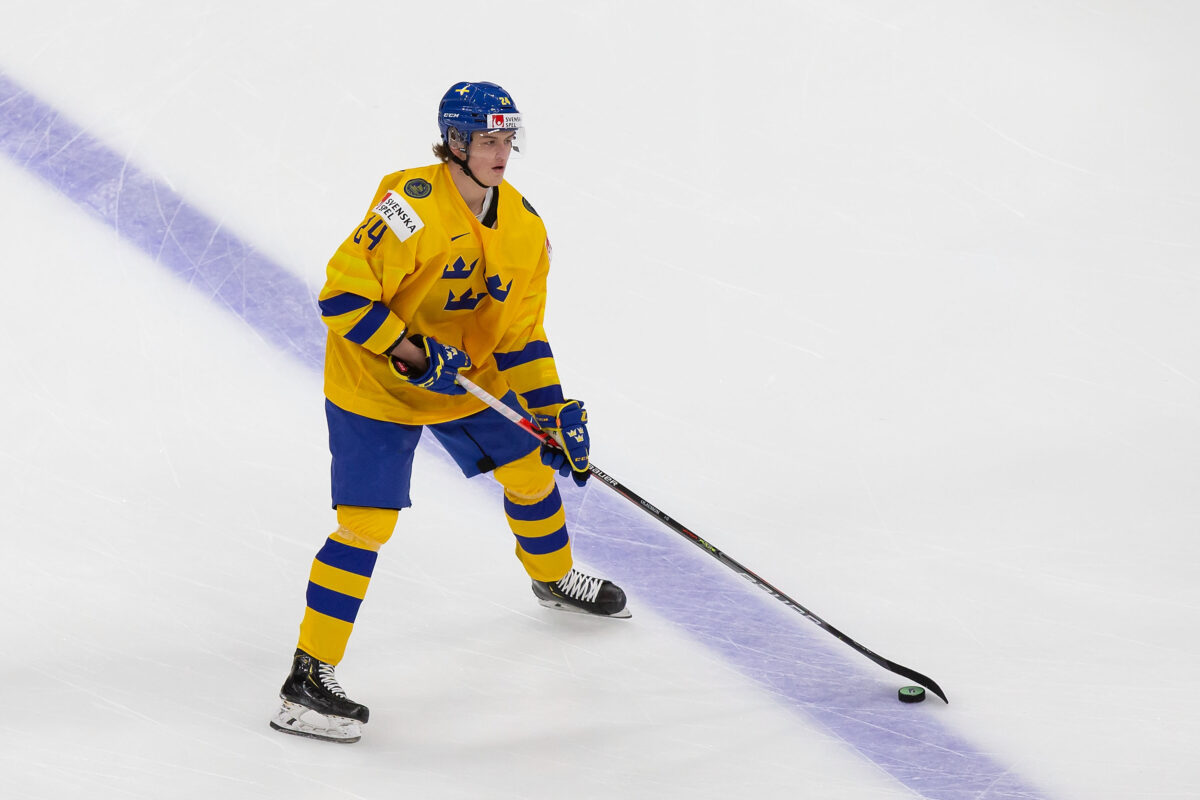
Olausson might worry some evaluators, but his ability to score goals is certain to woo some general manager on draft night. Expect him to be taken securely inside the first round, and he could even push into the top 20 or top 15 if the right team is very high on him.
5) Sasha Pastujov (U.S. NTDP, USHL)
Central Scouting Rank: #18 (among North American skaters)
Now, we start to move into the RWs with the potential to be impact players at the highest level in the NHL. Sasha Pastujov is a bit controversial in the scouting community, with some, like Button, ranking him as low as 36, while others like Zator (13) and Wheeler (14) have him very high. Ultimately — yes, this is becoming a theme — he will have one major factor in his favor: Pastujov played a ton of games this season. Between USDP and USHL, he managed 59 games, an outstanding total in this COVID-ravaged evaluation period. And during those games, he scored relentlessly, totaling 40 goals and 51 assists at all levels.
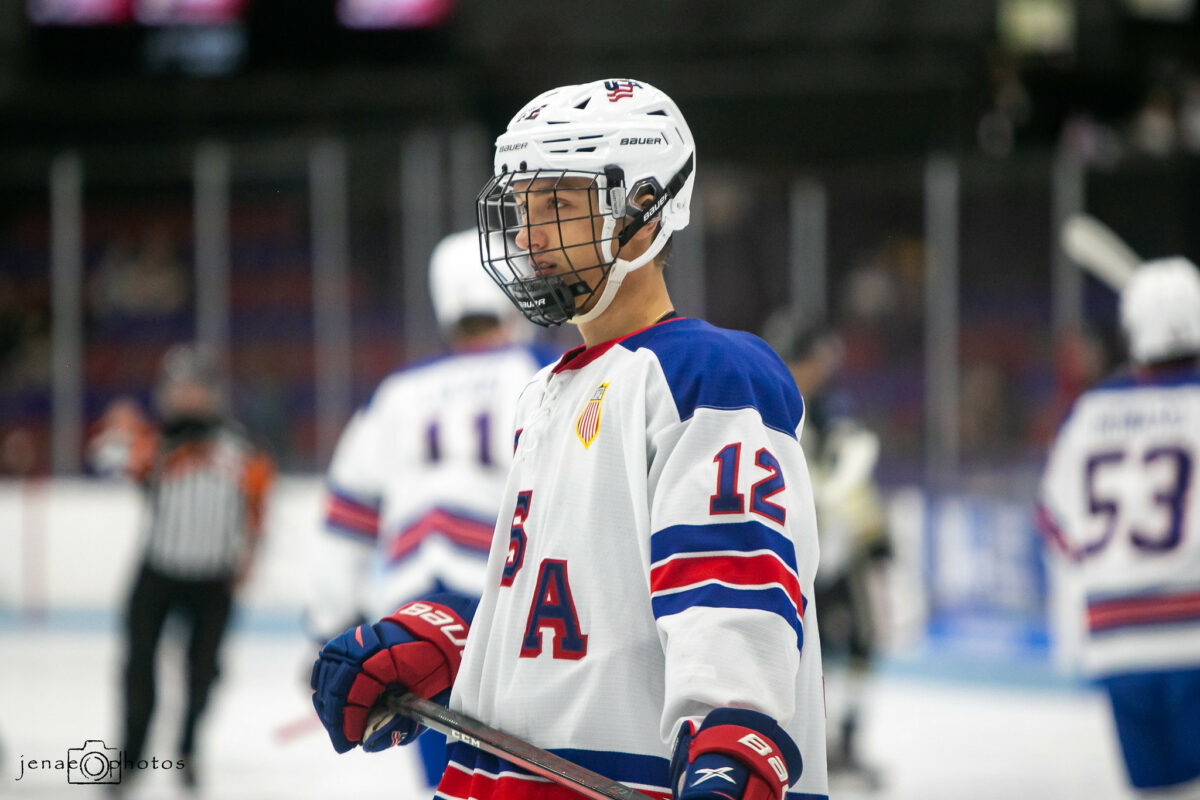
The criticisms of Pastujov, which kept him lower on the draft boards from some scouting experts, are clear: he’s not an elite skater, and some fear that will be a limitation to his finding success at the highest level. Moreover, some evaluators ask questions about his effort, which is inconsistent at times. Those are valid concerns, but when a player scores as easily as Pastujov, you can be certain some GM will overlook them.
Quoted in Wheeler’s article, USNTDP head coach Dan Muse spoke glowingly of his winger: “all he does is score and put up points. He’s a guy that has the great shot but he’s also got the playmaking ability. I love the fact that he wants the puck in key situations and moments in the game.” Ultimately, some team will see those numbers and ignore questions about his compete level. Pastujov should go in the top-20, and if he slips through that, a playoff team will be thrilled to scoop up a player with that upside late in the first round.
4) Nikita Chibrikov (SKA St. Petersburg, KHL)
Central Scouting Rank: #4 (among European skaters)
A smaller forward with a lot of skill, SKA St. Peterburg’s Nikita Chibrikov stands 5-foot-10 and weighs 161 pounds. But that hasn’t stopped him from rising up some draft boards. Chibrikov is a straight-line, direct player with a hard shot and above-average hockey sense. In our draft profile, Mathieu Sheridan spoke highly of Chibrikov, saying, “His shot is also something to behold. He is able to get it off in a hurry and is good at using deceptive moves to place it where he wants it. He does not shy down from physical play, either. He battles hard for the puck in the corners and has good lower-body strength, making it hard to knock him off the puck.”
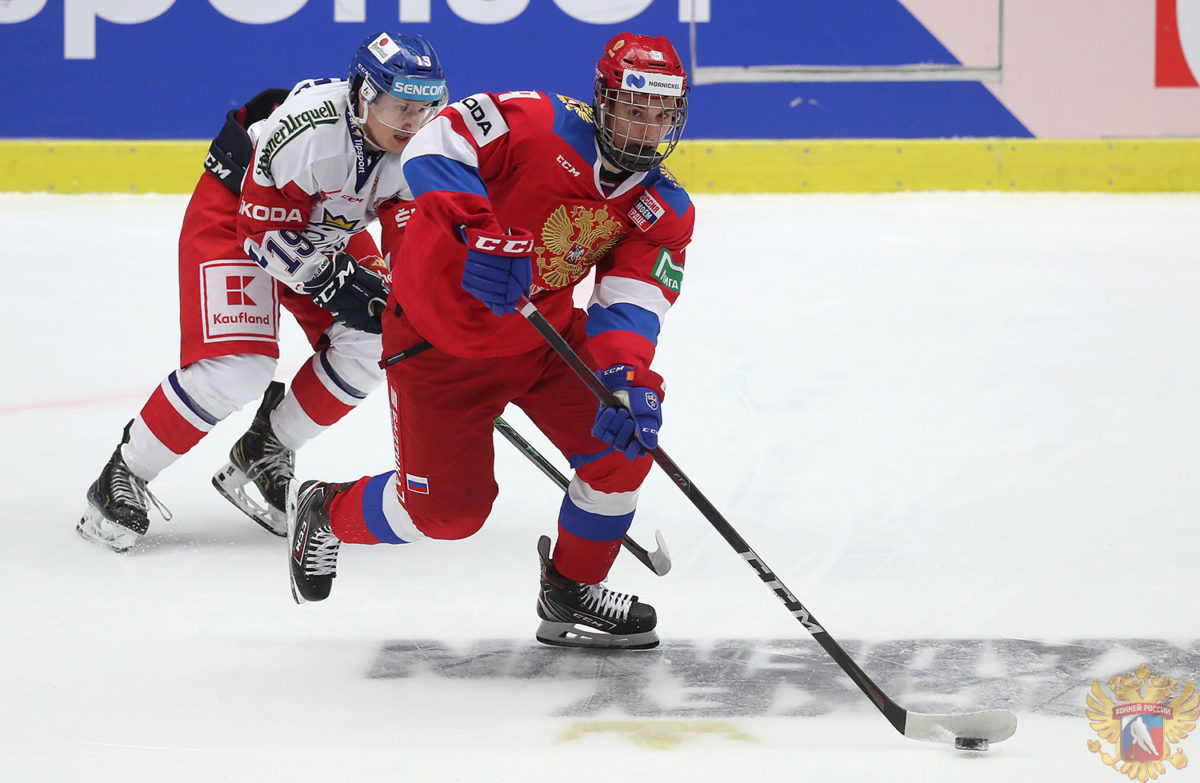
If there is a concern about Chibrikov, it’s his defensive play. Though his concentration is high in the offensive zone, his backcheck is unreliable. Wheeler is split: “When he’s engaged in the fight and keeping his feet moving, there’s a lot to like about his ability to impact a shift… But I’ve also come away from some viewings feeling like he wasn’t nearly as active or present as he needed to be. He’s a bit of an enigma.”
Even so, Chibrikov projects as a fairly high pick. Though some analysts think more highly of him than others, most view him as a solid first-round selection. His mean and median rankings among our six analysts stand at 22 and 21.5 respectively. In our mock draft, he ended up falling to the Colorado Avalanche at pick 27. With his level of offensive creativity, that could be a mouthwatering pick for hockey fans when he develops a few seasons down the line.
3) Matthew Coronato (Chicago Steel, USHL)
Central Scouting Rank: #9 (among North American skaters)
Typical of this strange draft class, even the top three prospects on this list don’t come without question marks and disagreements. But now we’ve entered the range of RWs that have the potential to be true game-changers for a franchise. Matthew Coronato finished second in USHL scoring this season with 85 points (48 goals), falling behind only 2020 Montreal Canadiens’ fourth-round pick Sean Farrell. Both played for the loaded Steel team that featured all four top scorers, along with Samoskevich. Coronato’s 85 points more than doubled the 40 he put up during the 2019-20 campaign.
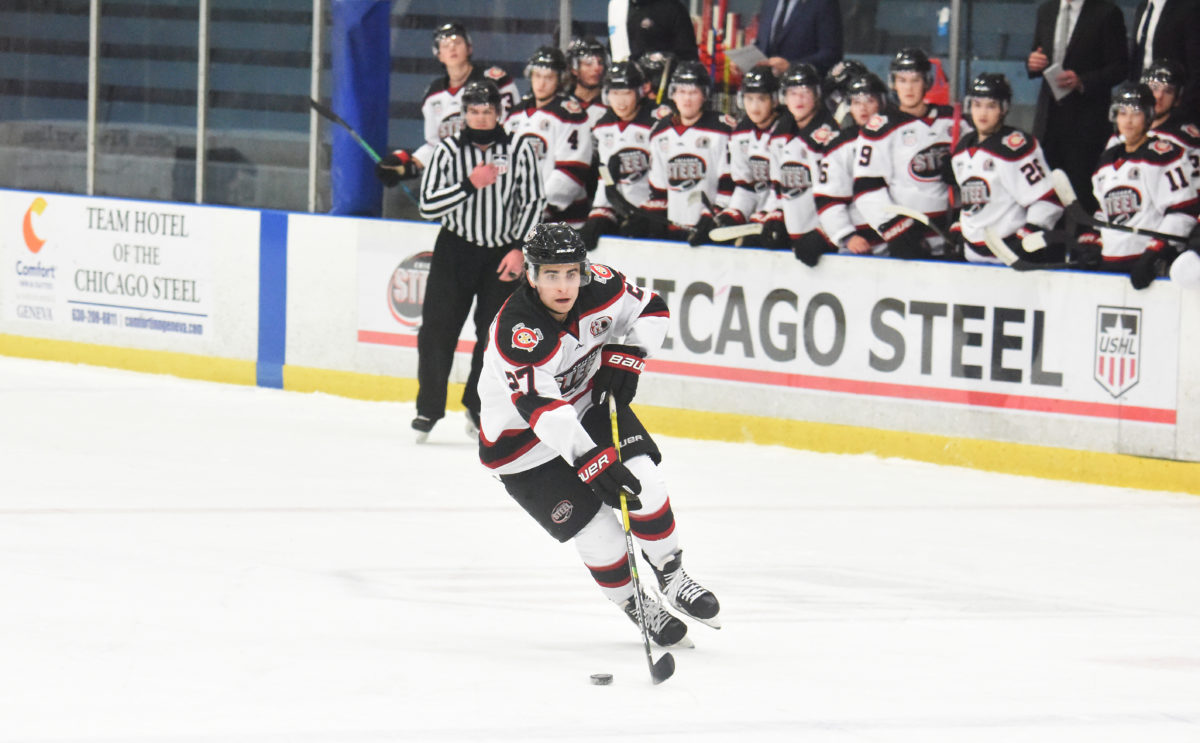
Coronato contrasts himself from players like Pastujov and Chibrikov with his relentless work ethic. In our draft profile, Zator spoke glowingly of the player he ranked 11th in his final draft rankings: “Coronato is a multi-faceted offensive threat that can play every forward position and any style you ask of him. He can run a power play, kill penalties and of course, put up points at an alarming rate. His work ethic is unmatched on the forecheck and he never gives up on a puck, which will make him a very valuable asset for an NHL coach someday.”
If that NHL coach wants to claim him, he’ll probably need to convince his GM to do it in the top-15 picks. Removing the outlier (Ryan Kennedy ranked Coronato 38th), our analysts had him ranked 17th or above. With scoring and that compete level, some GM will be excited to draft him. In our mock, he fell to 18th, but the experts at NHL.com had him going either 10th (Ottawa Senators) or 13th (Calgary Flames). That range seems more likely. With all the uncertainty in this draft, hustle will be a prized attribute.
2) Fabian Lysell (Luleå HF, SHL)
Central Scouting Rank: #9 (among European skaters)
Fabian Lysell might be the most debated player on this list. No expert thinks he is “bad,” but Pronman (22), Kennedy (27), and Button (30) all ranked him late in the first round, while Wheeler put him 13th and both our draft experts had him at number 5. Lysell got 26 games in the SHL playing with men last season, meaning the team saw enough of him to give him a shot — SHL teams are not primarily concerned with developing players for the NHL. Still, he scored just 16 points between Frölunda in the J20 Nationell and Luleå HF in the SHL, and that is a concern. But the highlight of Lysell’s season came in the U18 WJC, where he managed nine points in seven games.
Lysell is not short on skill, in fact, Pronman called him “one of the more talented players in the draft.” Baracchini elaborates: “Lysell is an offensive dynamo with excellent awareness and the ability to hurt you offensively. His greatest asset lies in his skating abilities as he has a very smooth stride and quick movements when navigating the ice. He has great speed to evade and blow by the opposition and moves the play very quickly when the puck is on his stick.”
The bigger concern with Lysell is inconsistency. He can look dazzling in stretches, as he did at the WJC, but his effort can shut off and he can look invisible. That will be incredibly frustrating to future fans, and some NHL GMs may stay away entirely because of it. Pronman nails it: “In a sentence, Lysell projects as a second-line winger who has the talent to dominate an NHL shift but may frustrate observers too.”
Still, we’ve ranked Lysell this highly based on pure ability. If he can find consistent effort, he could be a game-breaker at the next level. In our mock draft, the Vancouver Canucks scooped him up with the ninth pick. The Canucks know plenty about developing talented Swedish forwards. Lysell alongside Nils Höglander and Elias Pettersson would be incredibly interesting. Even if the real-life Canucks don’t take him, some GM will fall in love with his skill and draft him well inside the top 15.
1) Dylan Guenther (Edmonton Oil Kings, WHL)
Central Scouting Rank: #5 (among North American skaters)
Dylan Guenther is the cream of the crop on the right side in this draft class. He managed 24 points in just 12 games with the Edmonton Oil Kings of the WHL this season, following up on a 59 point performance from the season before. He also managed seven points in seven games at the U18 WJC. But like many Canadian players, his exposure was limited. He only managed 23 games total between the WHL, the AJHL, and the WJC. Even so, that shouldn’t affect his draft stock too much.
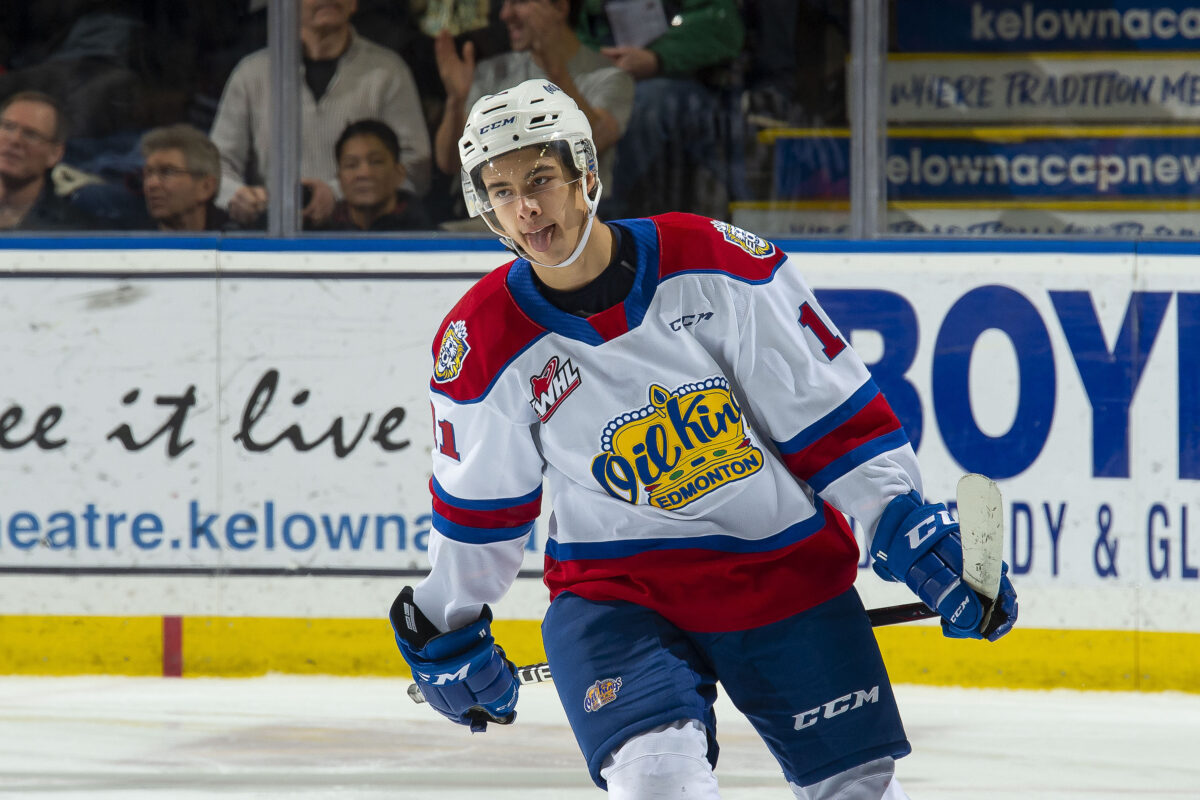
Every one of our analysts had Guenther ranked in the top 10 prospects, but Pronman placed him second overall, his only Tier 2 player, described as “projected bubble all-star/ top of lineup player.” He praised his “great skill” and “NHL pace,” plus his “work off the puck.” “In a sentence,” Pronman said, “Guenther may not be a true game breaker in the NHL, but he projects as a top-line forward who will endear himself to fans and coaches.”
Sheridan also praised his game, saying “With the puck on his stick, he is deadly. His ability to find open teammates in the slot is impressive. He is also really good at finding open space in the slot to present himself as an option for a scoring chance.”
There’s no doubt about Guenther’s talent, and he will almost certainly be one of the first names called on draft night. Both our mock draft and one of the NHL experts had the Anaheim Ducks taking him with the third overall pick. Whether it’s Orange County or somewhere else, Guenther will become a key piece in the future of a very lucky franchise.
Draft Night is Just the Start
All ten of these players will be picked in the top two rounds, and most will go in the first. But draft night is just the start. This season more than ever, the NHL teams who draft these players will be getting raw materials that they hope to mold into future stars. Guenther stands above the others in likelihood to reach that level, but all ten have aspects to their game that could lead them to become great players. But first, they have to hear their name called on July 23 or 24.